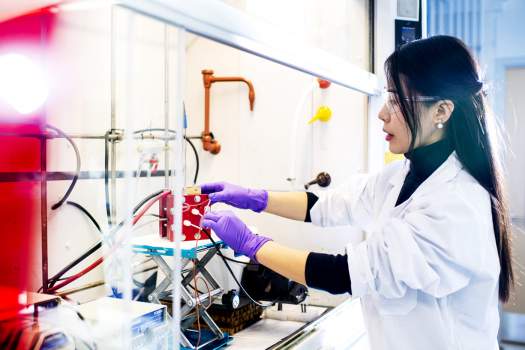
Author(s): Sadie-Rae Werner, D’Arcy White, Gajan Sathananthan, Alan Kenigsberg
Jun 23, 2021
On June 14, 2021, Canada and the European Union (EU) announced a new strategic partnership around critical mineral supply chains. This announcement comes out of the recent Canada-EU Leaders’ Summit and may create new avenues for Canadian corporations to capitalize on business opportunities in the European single market. It is also indicative of the growing role that geopolitical tensions are playing in institutionalizing bilateral relationships in international trade.
With the global economy transitioning to a low-carbon and more digitized model, the partnership represents an attempt by the Canadian and EU governments to secure supply chains for minerals and metals that will be critical to advanced manufacturing. In doing so, both countries are notably trying to diversify their economic reliance away from countries such as China, which had previously supplied some 98.5% of the EU’s rare earth elements and remains a key export destination for Canadian raw materials, and towards more traditional allies. At the joint press conference following the Leaders’ Summit, European Commission President Ursula von der Leyen expressly stated that such diversification was one of the EU’s main goals of the partnership.
The partnership comes after reports from earlier in the year suggested that China had discussed restricting its rare earth mineral exports to countries that it deems a threat to its national security, highlighting this potential supply chain vulnerability.
The partnership also follows the launch of the European Commission’s Critical Raw Materials Action Plan in September 2020, which focused on ensuring resilient critical materials supply chains and included Canada in a list of “resource-rich countries” with “large untapped potential for building sustainable and responsible partnerships”.
In announcing the strategic partnership, President von der Leyen also expressed the partners’ joint hopes that the partnership will promote sustainability, reduce environmental harm, and increase transparency around labour conditions. Moreover, the partnership’s framework, which was released on June 21, 2021, indicates that collaboration on science, technology and innovation, as well as on building environmental, social and governance standards, will be core areas for the parties to work together. This is in addition to the partnership’s overarching goal of building resilient and integrated raw materials value chains. The proposed framework for the strategic partnership is set out below.
Framework for a strategic partnership on raw materials
|
||
|
Overarching goal |
||
Areas
|
||
| Integration of Canada-EU raw materials value chains | Science, technology and innovation collaboration | Environmental, social, and governance (ESG) criteria, and standards |
Objectives
|
||
| Bring investors (including downstream industry end-users of critical raw materials) and raw material project proponents together, share information on opportunities, and identify and leverage private and public investment into a pipeline of projects at various stages of the raw material value chain. | Collaborate with industry and other stakeholders to advance critical raw materials supply chain research and innovation, including extraction and processing from low footprint, economic ore deposits to low waste streams, supporting end-to-end value chain sustainability and circularity. | Lead by advancing world-class ESG credentials in a Canada-EU integrated critical raw material value chain, while advocating in multilateral fora for strong and effective international practices. |
Along with the Comprehensive Economic and Trade Agreement (CETA), which has governed trade between Canada and the EU since 2017, this new partnership may usher in a variety of new opportunities for Canadian companies looking to expand their presence in the European single market, especially in the extractive sector. While the details of how the partnership will be implemented are unclear at this time, businesses with expertise in supply chain logistics, sustainability consulting, and resource extraction should remain alert for any incoming bilateral incentives that may follow from the objectives outlined in the table above.

This Post Has 0 Comments